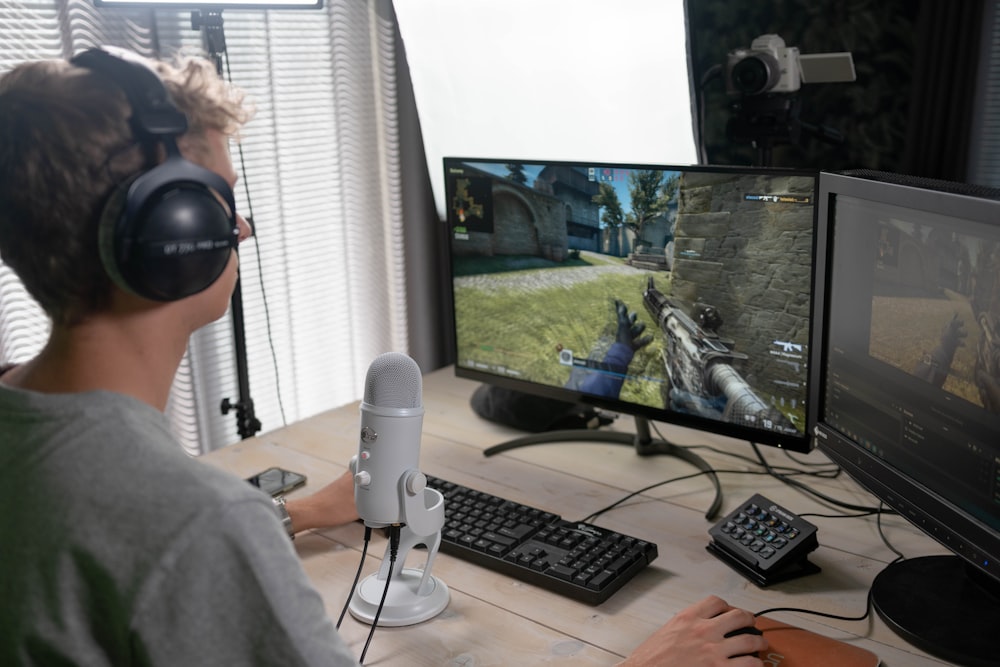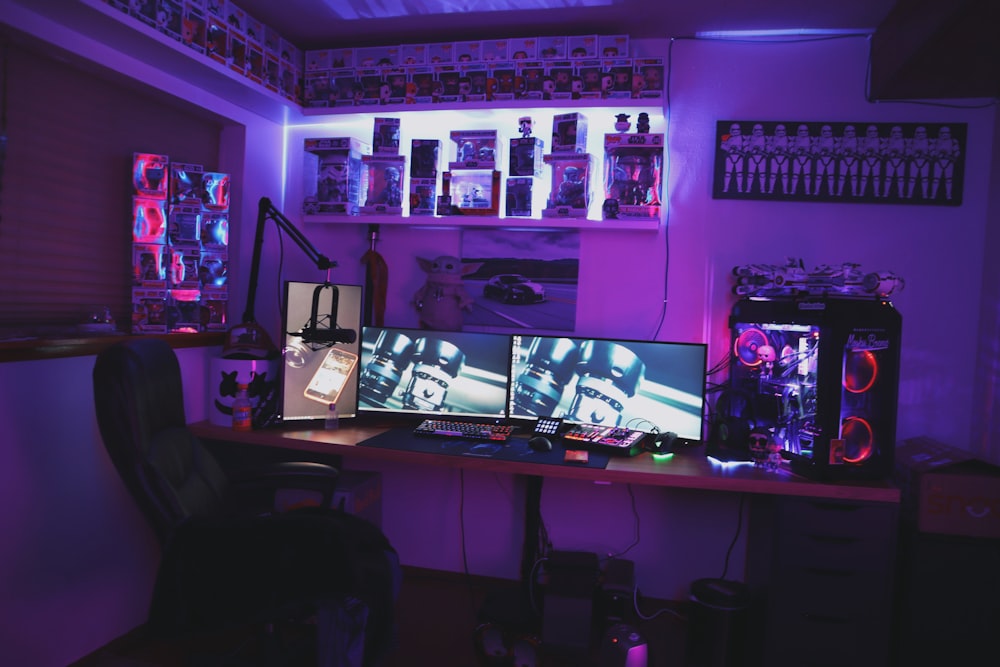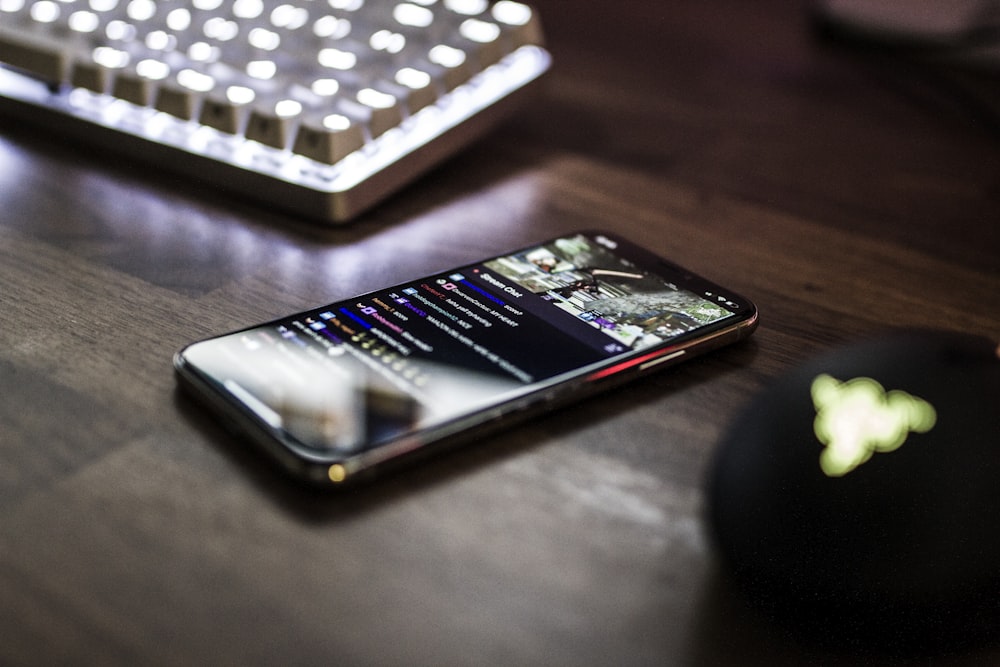What is Live Streaming?: The Ultimate Guide to Live Streaming

The live streaming industry is currently valued at over $70 billion, and it is expected to reach a market value of $223.98 billion by 2028. This method of media distribution is hot across many industries because it is more engaging than static content.
In this post, we will discuss everything creators need to know about live streaming. We’ll discuss use cases, benefits, and more. From there, we will provide a step-by-step walkthrough on how to live stream, plus some information on how to monetize your streams.
Table of Contents
- What is Live Streaming?
- Who Uses Lives Streaming?
- VOD Streaming vs. Live Streaming
- How to Live Stream
- How to Make Money Live Streaming
- Live Streaming on Maestro
What is Live Streaming?
Live streaming is broadcasting video content over the internet in real-time.
Thanks to modern streaming technology, videos can be delivered from the camera to viewers’ devices worldwide in seconds. Depending on the streaming setup, the delivery time can be as low as milliseconds.
It is important to point out that “streaming” indicates that the video is broadcasted and viewed over the internet, and it loads as it is played as opposed to requiring a full download before watching.
Benefits of Live Streaming
There are several benefits of live streaming. The most significant benefit of live streaming is that it effectively engages an audience. It creates a more lifelike experience for the viewers since it happens in real-time.
Aside from real-time interaction, live streams create a sense of urgency that tends to be captivating. Studies show that live streams capture viewers’ attention for 10-20x longer than VOD content. Live streams cover events that are playing out at that very moment, so they create a bit of FOMO, which helps entice viewers to keep watching.
Live streaming is also valuable because it helps to increase your reach and expand brand awareness, and it allows you to connect with a larger audience in a way that still feels personal.
Who Uses Live Streaming?
Anyone can live stream, but live streaming is commonly used by creators, brands, agencies, and enterprises. Some types of creators who use live streaming include vloggers, gamers, musicians, fitness instructors, independent educators, and more.
Live streaming can be used in a ton of different circumstances. Some of the top use cases of live streaming include:
- Hobby streaming
- Live selling
- Q&As
- Virtual events
- Concerts and music festivals
- eSports
- Sporting events
Although these are common use cases, live video streaming can be used however you’d like. You can get as creative as you’d like to make this media distribution method your own.
VOD Streaming vs. Live Streaming
While we’re on the topic of live streaming, it is important to differentiate between live streaming and VOD streaming.
Video on demand streaming, or “VOD” for short, is an online streaming method that provides users with on-demand access to a collection of pre-produced, uploaded content.
Both kinds of streaming content are valuable for broadcasters, but they serve different purposes. Live streaming is typically used for things that benefit from real-time, lifelike interactions, whereas VOD streaming is valuable for presenting a series of evergreen content.
How to Live Stream
With the right streaming setup, live streaming is easy. In fact, just anybody can live stream since no experience is required.
Here’s how you can host a live stream in five steps.
1. Choose a Hosting Platform
The first step of live streaming is choosing an online video platform. This is the place where you’ll host, manage, and distribute your live streams.
There are tons of hosting platforms on the market, so choosing one that makes sense for your streaming goals and needs is important.
There are two main types of online video platforms: free and professional-grade. Free hosting platforms, such as YouTube, Facebook, and Twitch, are good places to start. However, creators who are getting serious about brand building, monetization, and growth should consider a professional-grade solution.
As you compare each platform, consider the features that each offers. Does it have the flexibility that you need? Is it within your budget?
2. Set Up Your Capture Equipment
Next, you’ll choose your capture equipment. A webcam will do, but more advanced streaming setups will require a higher-quality camera and external mics.
If you’re planning to use a webcam, the one on your laptop or computer might suffice for some streams, but an external webcam usually creates a higher quality stream. They range from about $50 to upward of $2000 for more advanced options. Higher-quality cameras will range from a couple hundred to a couple of thousand dollars.
Once you’ve chosen your capture equipment, you can set it up in the location where you’ll be streaming. Take some time to experiment with angles, lighting, and acoustics to make sure you’re setup to produce the best stream possible.
3. Configure Your Streaming Setup
Now that you’ve decided on some of the key components of your streaming workflow, it’s time to configure you’re streaming setup. Each streaming setup will be unique since reaching different goals will call for different support.
Aside from capture equipment and an online video platform, your streaming setup will likely include an encoder, production software, mixers, and lighting equipment. In most cases, these can be connected directly to your online video platform.
A strong internet connection is also a must for a successful stream. We recommend using tethered internet or WiFi, but cellular data can be used as a last resort.
4. Do a Test Run
We recommend doing a test run after you’ve configured your streaming setup to identify any potential issues before you start streaming. This will help you see where the streaming workflow needs to be reinforced.
For example, if you notice that your laptop’s battery dies quickly, make sure your setup is configured so that it can be connected to a power source. If there is obnoxious background noise, figure out how to eliminate that before showtime.
During your test run, make sure that you check your internet connection. Head to Google, and search “Internet Speed Test.” Click “Run Speed Test” in the top result.
Ideally, your upload speed should be about 9 Mbps for HD streaming. You can get away with as little as 2 to 3 Mbps, but faster is a safer bet if you want to avoid buffering or lagging.
5. Start Streaming
If your setup is working as intended, it is time to start live streaming. On most platforms, you can start your stream with the click of a button as long as you’ve configured your channel beforehand.
If this is your first stream, you may be a little nervous, but do not fret! Allow yourself to have some fun with it. Your audience will feed off your energy, so if you’re excited about the stream, they will be, too.
How to Make Money Live Streaming
Many creators host live streams with the goal of generating revenue. Luckily, there are several different ways to monetize your streams.
Some popular ways to make money live streaming are subscriptions, ticketing, tipping, live commerce, and sponsorships.
With subscriptions, viewers pay for unlimited access to all of the streams on your channel. Typically, subscriptions run monthly. Ticketing, on the other hand, allows viewers to buy access to one-off events.
Tipping and live commerce are two monetization methods that rely on the support of your viewers. Tipping allows viewers to make a tip or donation of any amount to creators. Live commerce, which is also known as “live selling,” involves selling products within a stream.
Last but not least, sponsor-based monetization allows brands to pay for promotion within your stream. This could involve ads, commercials, product placement, and other sorts of promotions. Sponsorships should be aligned with your brand’s purpose and values. Working with aligned sponsors will make better benefit all parties involved.
How you monetize your streams needs to make sense for your viewers. For example, if you’re offering an online course, having users pay for access makes more sense than using live commerce.
Live Streaming on Maestro
As you can see, live streaming presents a powerful opportunity for brands and creators to connect with their audiences.
Maestro is a unique offer in the online video hosting space. Our live streaming tools are experience-focused. With Maestro, users can create custom sites to house their live streams. Creators can also use interactive panels and overlays to keep the viewers engaged.
Best of all, we offer a variety of monetization methods, including live commerce, ticketing, subscriptions, and tipping. This makes it possible to deploy flexible video monetization strategies.
Are you ready to start streaming? Sign up for Maestro today to start streaming for free.
Join our Discord server to learn more tips and tricks for streaming on Maestro.

